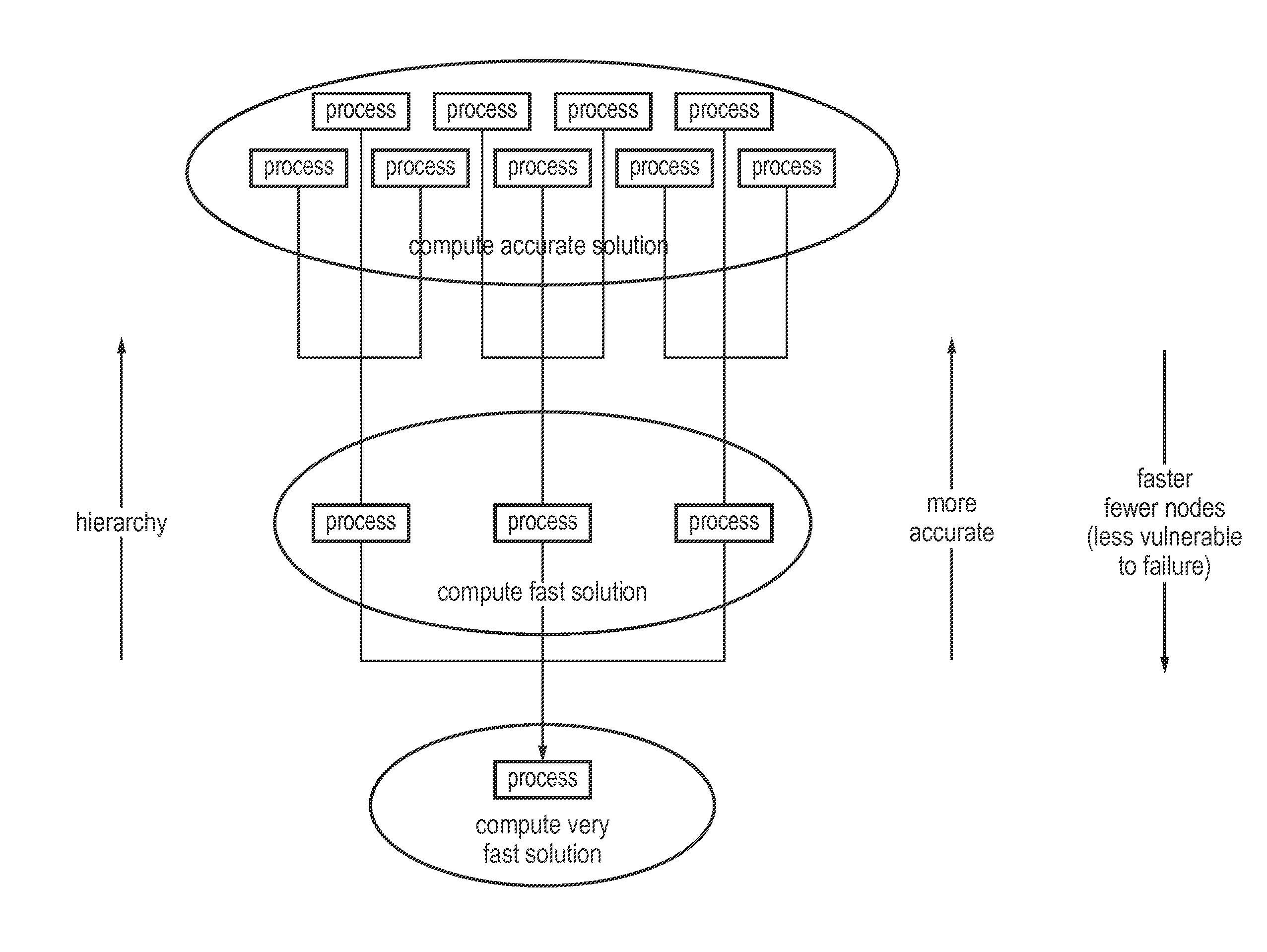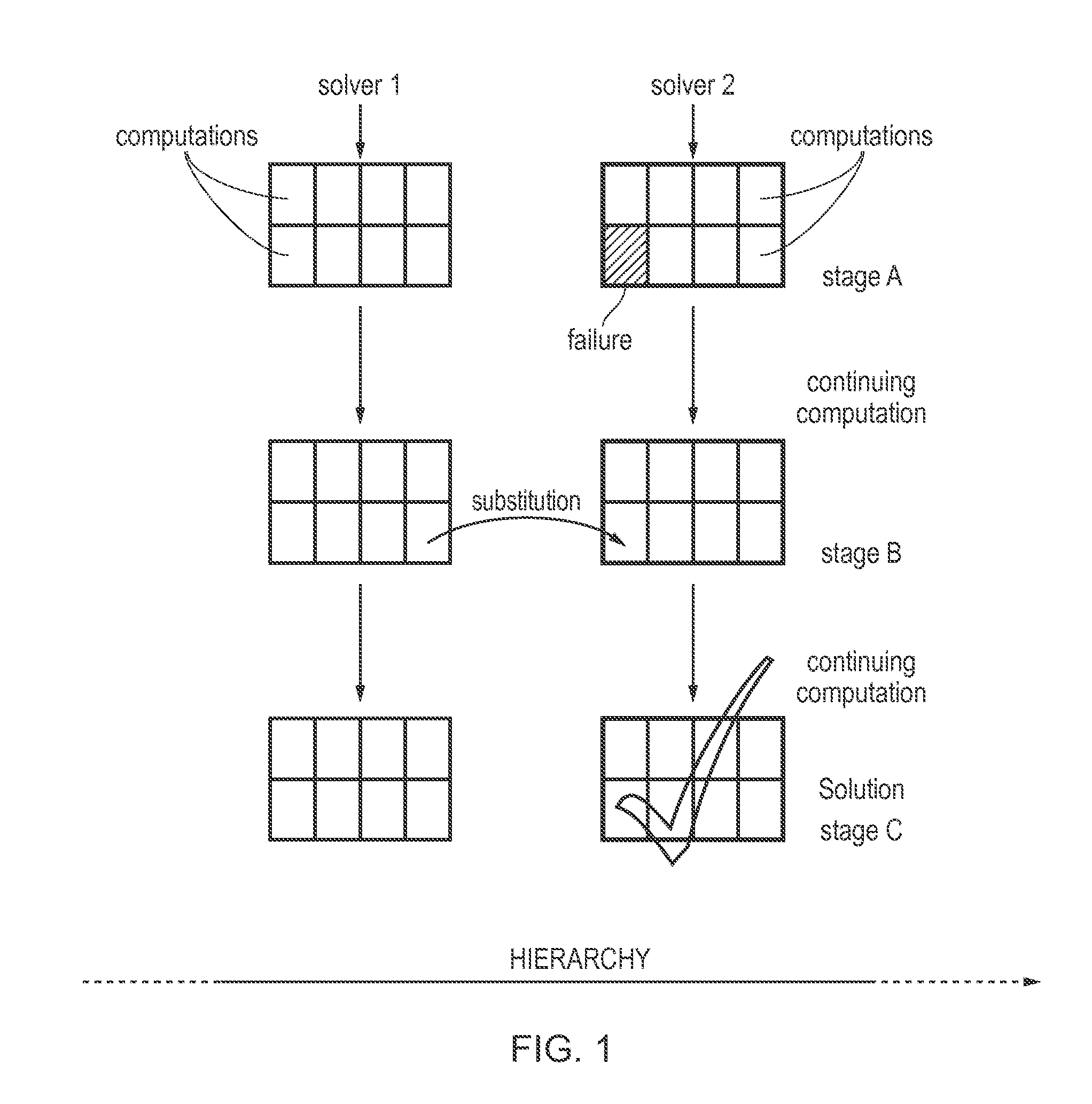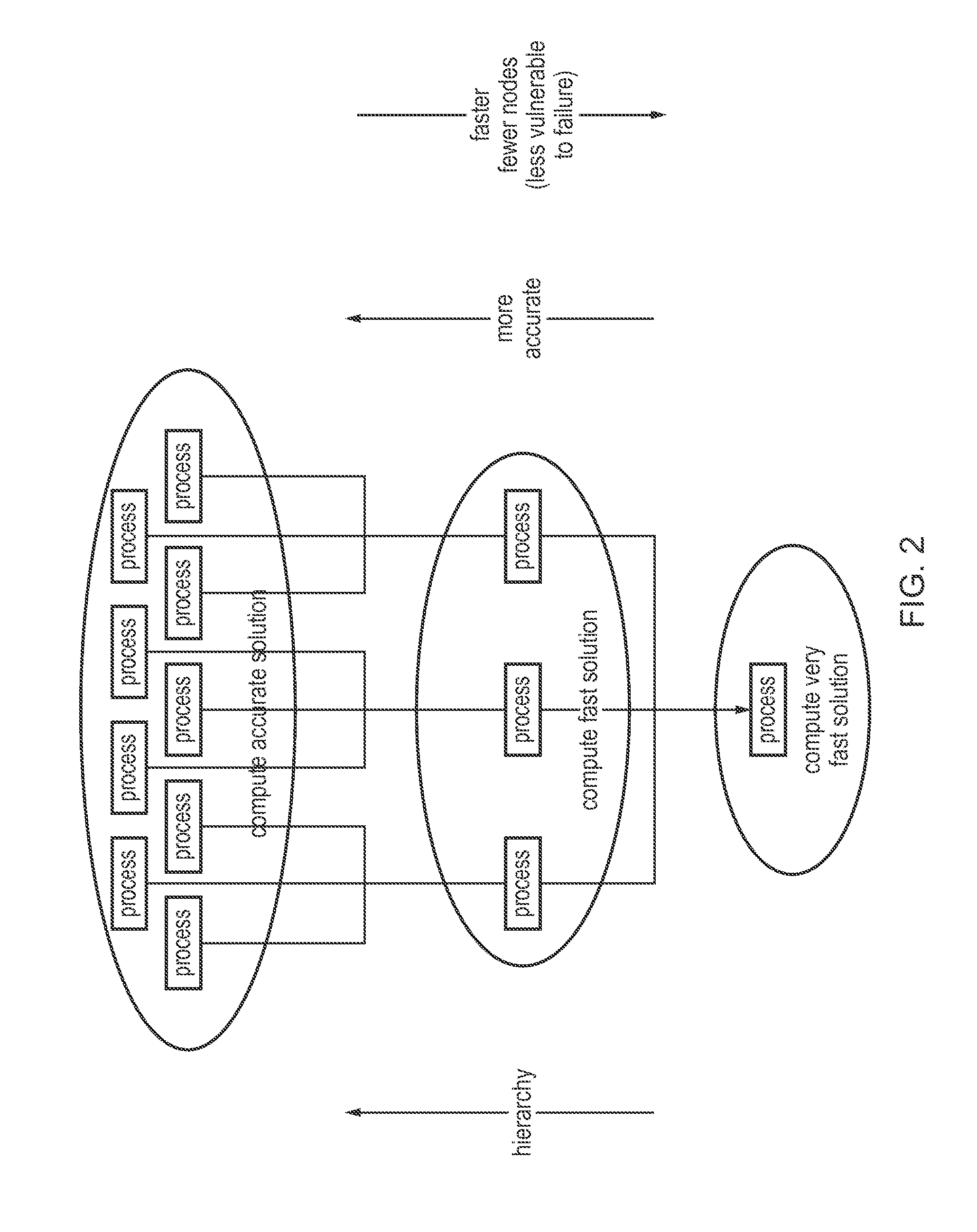Method of improving fault tolerance in a computing system arranged to find a computational solution
a computing system and fault tolerance technology, applied in computing, error detection/correction, instruments, etc., can solve problems such as large amount of computation having to be repeated, large amount of computation, and high cost of replication of work, so as to reduce the risk of failure, less communication, and less accurate solutions
- Summary
- Abstract
- Description
- Claims
- Application Information
AI Technical Summary
Benefits of technology
Problems solved by technology
Method used
Image
Examples
Embodiment Construction
[0087]Reference will now be made in detail to the embodiments, examples of which are illustrated in the accompanying drawings, wherein like reference numerals refer to the like elements throughout. The embodiments are described below to explain the present invention by referring to the figures.
[0088]FIG. 1 is an overview diagram of two different solvers according to invention embodiments. Solver 1 is shown to the left and solver 2 to the right. Other solvers may be present within the hierarchy, as illustrated by the dotted lines of the hierarchy arrow to the left and right of Solvers 1 and 2. Solver 2 is higher in the hierarchy, and its results are thus to be used for the computational solution. It is shown in bold, and is assumed to be better in some way, by dint of higher, accuracy, complexity reliability etc.
[0089]At stage A, shown at the top of the figure, both solvers are carrying out computations. This is shown by the division of a block into cells, although no particular refe...
PUM
 Login to View More
Login to View More Abstract
Description
Claims
Application Information
 Login to View More
Login to View More - R&D
- Intellectual Property
- Life Sciences
- Materials
- Tech Scout
- Unparalleled Data Quality
- Higher Quality Content
- 60% Fewer Hallucinations
Browse by: Latest US Patents, China's latest patents, Technical Efficacy Thesaurus, Application Domain, Technology Topic, Popular Technical Reports.
© 2025 PatSnap. All rights reserved.Legal|Privacy policy|Modern Slavery Act Transparency Statement|Sitemap|About US| Contact US: help@patsnap.com



